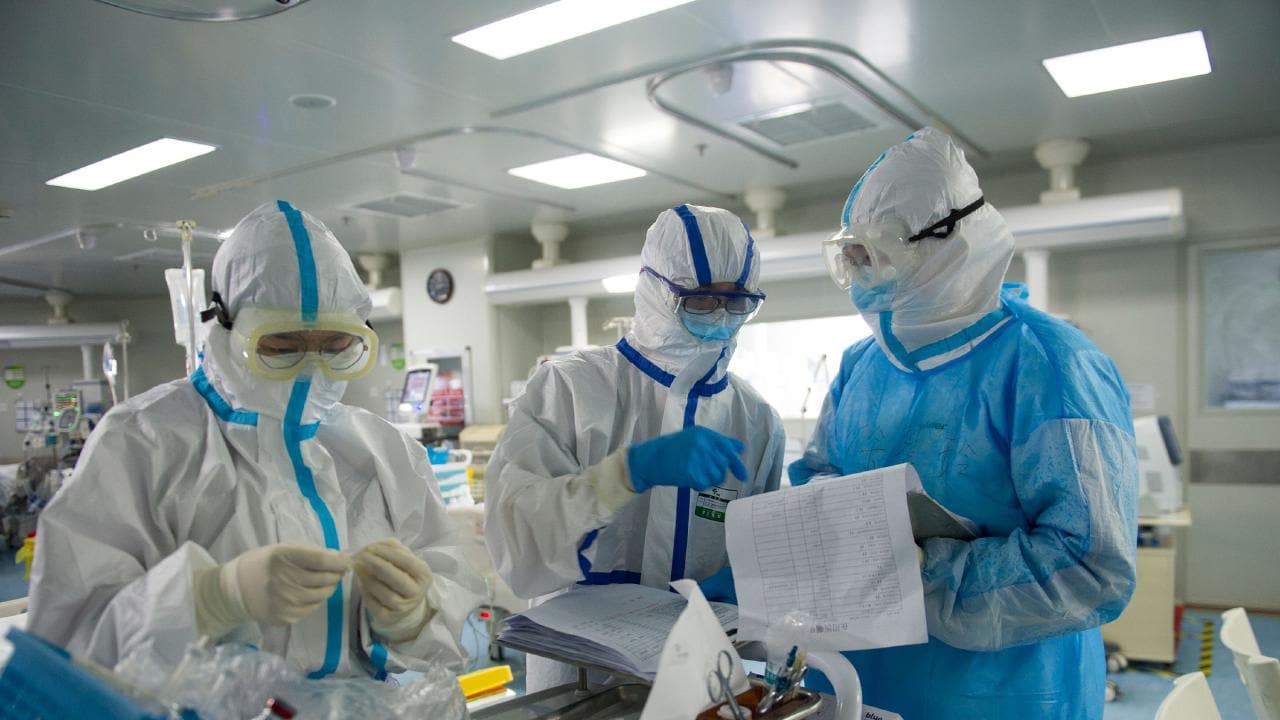In workplaces where safety is paramount, personal protective equipment (PPE) plays a crucial role in safeguarding workers from injuries and exposure to hazardous environments. The choice between reusable and disposable protective gear often depends on factors such as cost, environmental impact, functionality, and specific industry needs. Both options have unique benefits and drawbacks, and understanding these is essential for making informed decisions.
This article delves into the advantages and disadvantages of reusable and disposable protective gear, offering insights into how organizations can choose the most suitable option for their operations.
Understanding Reusable and Disposable Protective Gear
1. Reusable Protective Gear
Reusable PPE is designed for multiple uses, requiring cleaning, maintenance, or sterilization between uses. It is often made from durable materials like leather, rubber, or high-grade plastics, ensuring longevity and reliability in challenging conditions.
Examples:
- Hard hats
- Safety goggles
- Respirators with replaceable filters
- Chemical-resistant gloves
- Flame-resistant clothing
2. Disposable Protective Gear
Disposable PPE is intended for single use, discarded after serving its purpose. These items are typically made from lightweight materials such as polypropylene, nitrile, or latex.
Examples:
- Disposable gloves
- Surgical masks
- Shoe covers
- Non-woven gowns
- Disposable coveralls
Key Considerations When Choosing Between Reusable and Disposable Gear
1. Level of Protection
Both types of PPE offer varying levels of protection depending on their design and intended use. Disposable gear often provides protection against contamination, making it suitable for environments like healthcare or laboratories. Reusable gear, on the other hand, is built to withstand prolonged exposure to physical or chemical hazards, making it ideal for industries such as construction and manufacturing.
2. Environmental Impact
With growing awareness of environmental concerns, the disposal of single-use PPE has become a pressing issue. Reusable gear reduces waste, offering a more sustainable solution when managed properly. However, the cleaning and sterilization process can also have an environmental footprint if not conducted responsibly.

3. Cost-Effectiveness
- Short-term costs: Disposable gear is typically cheaper upfront, making it suitable for temporary or low-frequency needs.
- Long-term costs: Reusable gear may involve higher initial investment but proves more economical over time due to its extended lifespan.
4. Maintenance and Storage
Reusable gear requires regular cleaning, maintenance, and proper storage to remain effective, which adds to logistical challenges. Disposable gear, by contrast, eliminates the need for upkeep, offering convenience and simplicity.
Advantages of Reusable Protective Gear
1. Cost Efficiency
Reusable PPE offers long-term savings, particularly in industries with consistent PPE needs. For example, investing in a durable pair of gloves or a respirator with replaceable filters can save costs over time compared to repeatedly purchasing disposables.
2. Environmental Sustainability
Reusable gear reduces landfill waste, aligning with corporate sustainability goals. Many companies are adopting reusable PPE to minimize their environmental footprint and promote eco-friendly practices.
3. Durability and Reliability
Reusable gear is built to withstand wear and tear, providing reliable protection in harsh environments. For instance, flame-resistant clothing for welders or reinforced gloves for construction workers are designed to endure high-stress conditions.
4. Customization
Reusable PPE often allows for customization to meet specific industry requirements. Workers can select gear tailored to their tasks, ensuring maximum safety and comfort.
Disadvantages of Reusable Protective Gear
1. Maintenance Requirements
Cleaning, disinfecting, and repairing reusable PPE can be time-consuming and resource-intensive. Without proper care, gear may lose its protective properties, compromising worker safety.
2. Higher Initial Costs
The upfront investment in reusable gear can strain budgets, particularly for small businesses or organizations with limited resources.
3. Risk of Contamination
If not thoroughly cleaned, reusable gear can harbor bacteria, viruses, or hazardous substances, increasing the risk of cross-contamination in sensitive environments.
Advantages of Disposable Protective Gear
1. Convenience
Disposable PPE requires no maintenance, making it ideal for industries where time and efficiency are critical, such as healthcare or food processing.

2. Hygiene and Safety
Single-use gear is discarded after use, eliminating the risk of contamination and ensuring optimal hygiene. This is particularly important in environments where exposure to infectious agents is a concern.
3. Lower Initial Costs
The affordable upfront cost of disposable PPE makes it accessible for short-term projects or one-time use, such as during emergency response efforts or temporary construction sites.
4. Lightweight and Comfortable
Disposable gear is often lighter and more comfortable, making it easier for workers to wear during extended shifts.
Disadvantages of Disposable Protective Gear
1. Environmental Concerns
The growing reliance on disposable PPE has led to significant environmental challenges, with millions of tons of PPE waste ending up in landfills and oceans.
2. Long-Term Costs
For industries requiring constant PPE usage, disposable gear can quickly become more expensive than reusable alternatives, adding up over time.
3. Limited Durability
Disposable PPE is not designed for repeated use or exposure to extreme conditions, which can limit its effectiveness in certain industries.
Industry-Specific Preferences: Reusable vs. Disposable Gear
Healthcare
- Preferred option: Disposable PPE
- Reason: The healthcare industry prioritizes hygiene and contamination control. Single-use gloves, masks, and gowns are standard to reduce the risk of infection.
Construction
- Preferred option: Reusable PPE
- Reason: Durable equipment such as hard hats, steel-toe boots, and safety goggles are cost-effective and built to endure tough conditions.
Manufacturing
- Preferred option: A combination of both
- Reason: While reusable gear is often used for routine tasks, disposable items like gloves or masks may be necessary for specific processes involving chemicals or particulates.
Food Processing
- Preferred option: Disposable PPE
- Reason: Ensuring hygiene and preventing cross-contamination is critical, making disposable gloves, aprons, and hairnets the go-to choice.
Best Practices for Choosing the Right PPE
- Conduct a Risk Assessment: Analyze workplace hazards to determine the level of protection required.
- Consider Usage Frequency: For long-term needs, reusable gear may be more cost-effective, while disposable gear is suitable for short-term tasks.
- Evaluate Environmental Impact: Choose sustainable options whenever possible, such as biodegradable disposables or responsibly sourced reusable gear.
- Ensure Compliance: Verify that PPE meets industry-specific safety standards, such as OSHA or ISO guidelines.
- Provide Training: Educate workers on proper PPE use, cleaning, and disposal to maximize effectiveness and safety.
Future Trends in Protective Gear
As industries evolve, innovations in PPE design aim to bridge the gap between reusable and disposable gear:
- Biodegradable Disposables: Single-use PPE made from eco-friendly materials that decompose quickly, reducing environmental impact.
- Smart PPE: Advanced gear with embedded sensors to monitor usage and detect hazards.
- Hybrid Models: Gear that combines the durability of reusable PPE with the convenience of disposable items, such as washable respirators with replaceable filters.
Conclusion
The debate between reusable and disposable protective gear is not about which is universally better but rather which is better suited to a specific situation. Reusable PPE offers long-term cost savings, durability, and environmental benefits, making it ideal for industries with consistent safety needs. On the other hand, disposable PPE ensures hygiene, convenience, and immediate accessibility, especially in industries like healthcare and food processing.
By understanding the unique benefits and limitations of each option, organizations can make informed decisions that balance safety, cost, and environmental responsibility. Ultimately, the right choice of protective gear ensures worker safety while aligning with organizational goals and industry requirements.


